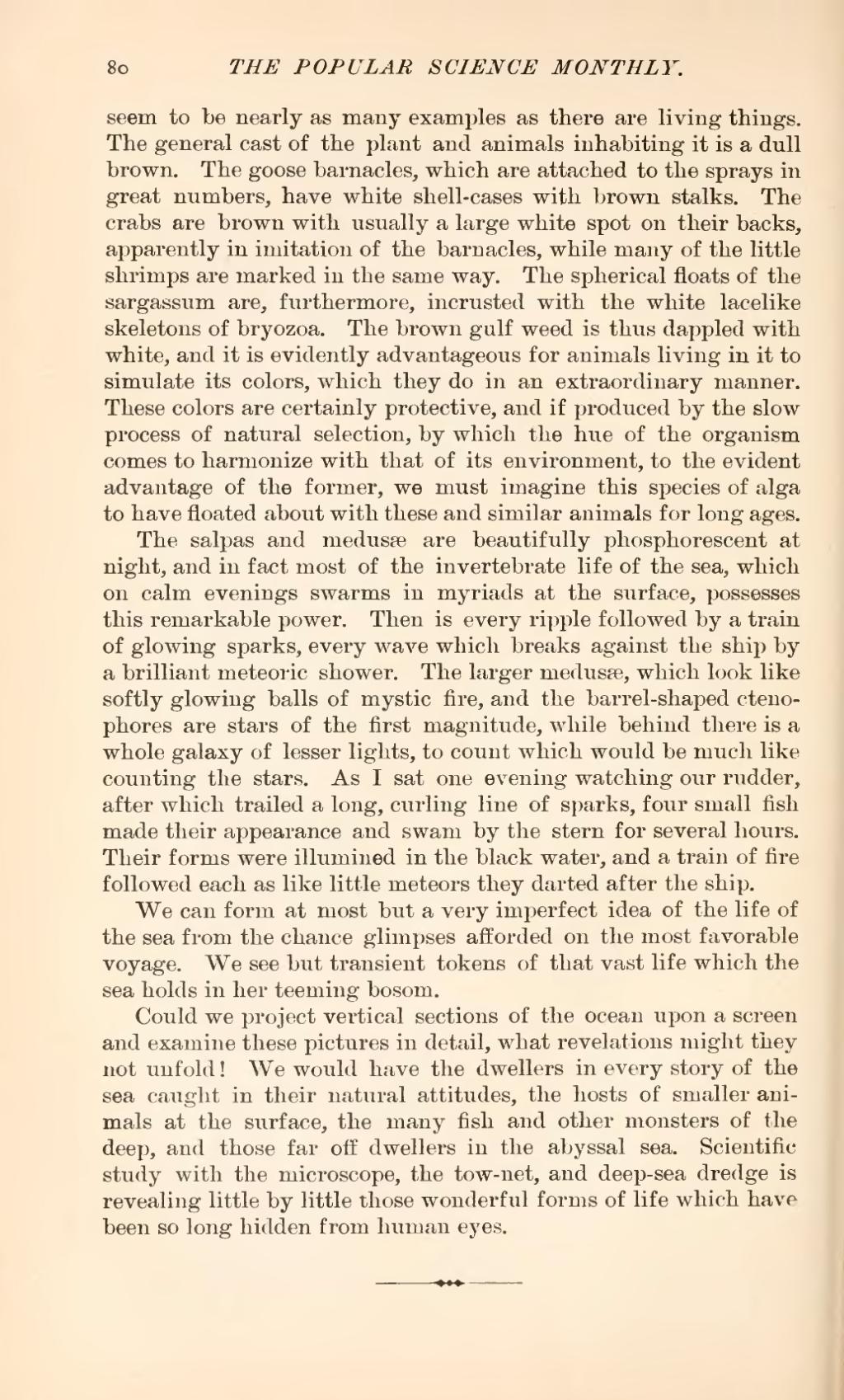seem to be nearly as many examples as there are living things. The general cast of the plant and animals inhabiting it is a dull brown. The goose barnacles, which are attached to the sprays in great numbers, have white shell-cases with brown stalks. The crabs are brown with usually a large white spot on their backs, apparently in imitation of the barnacles, while many of the little shrimps are marked in the same way. The spherical floats of the sargassum are, furthermore, incrusted with the white lace-like skeletons of bryozoa. The brown gulf weed is thus dappled with white, and it is evidently advantageous for animals living in it to simulate its colors, which they do in an extraordinary manner. These colors are certainly protective, and if produced by the slow process of natural selection, by which the hue of the organism comes to harmonize with that of its environment, to the evident advantage of the former, we must imagine this species of alga to have floated about with these and similar animals for long ages.
The salpas and medusæ are beautifully phosphorescent at night, and in fact most of the invertebrate life of the sea, which on calm evenings swarms in myriads at the surface, possesses this remarkable power. Then is every ripple followed by a train of glowing sparks, every wave which breaks against the ship by a brilliant meteoric shower. The larger medusæ, which look like softly glowing balls of mystic fire, and the barrel-shaped ctenophores are stars of the first magnitude, while behind there is a whole galaxy of lesser lights, to count which would be much like counting the stars. As I sat one evening watching our rudder, after which trailed a long, curling line of sparks, four small fish made their appearance and swam by the stern for several hours. Their forms were illumined in the black water, and a train of fire followed each as like little meteors they darted after the ship.
We can form at most but a very imperfect idea of the life of the sea from the chance glimpses afforded on the most favorable voyage. We see but transient tokens of that vast life which the sea holds in her teeming bosom.
Could we project vertical sections of the ocean upon a screen and examine these pictures in detail, what revelations might they not unfold! We would have the dwellers in every story of the sea caught in their natural attitudes, the hosts of smaller animals at the surface, the many fish and other monsters of the deep, and those far off dwellers in the abyssal sea. Scientific study with the microscope, the tow-net, and deep-sea dredge is revealing little by little those wonderful forms of life which have been so long hidden from human eyes.
